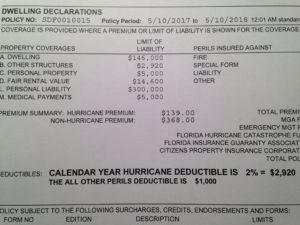An example of policy ambiguity
 For those of you who are wordsmiths and enjoy writing policy language for insurance policy forms, you will be nodding your heads north and south when you read the latest case about ambiguous policy language. Every word counts and as we hear over and over again, words matter. Enjoy the read!
For those of you who are wordsmiths and enjoy writing policy language for insurance policy forms, you will be nodding your heads north and south when you read the latest case about ambiguous policy language. Every word counts and as we hear over and over again, words matter. Enjoy the read!
In April 2016, the ceiling in one section of the Easthampton Congregational Church in Easthampton, Massachusetts, collapsed, according to last Friday’s ruling by the 1st U.S. Circuit Court of Appeals in Boston in Easthampton Congregational Church v. Church Mutual Insurance Co.
A forensic engineer hired by the insurer found three layers of ceiling, and concluded the collapse was caused by the “progressive failure of the fasteners used to attach the layers of ceiling to the ceiling joists due to the weight of the ceiling.” The insurer denied coverage on the basis of a “faulty construction” exclusion in the policy, according to the ruling. The church filed suit against the Church Mutual in Massachusetts state court. The litigation was later transferred to the U.S. District Court in Springfield, Massachusetts, which ruled in the church’s favor.
This was affirmed by a unanimous three-judge 1st Circuit panel in last Friday’s ruling, although on somewhat different grounds.
The lower court ruling discusses the dictionary definition of “decay” in the policy and concludes the insurer was obligated to provide coverage under a policy provision.
The appeals court panel ruled in the church’s favor on the basis the word “decay” could “plausibly be read to mean either ‘progressive decline’ or ‘rot.’ “Accordingly, its meaning is ambiguous and that ambiguity must be resolved in the church’s favor,” said the panel’s ruling, in affirming the lower court’s ruling. The church’s policy with Merrill, Wisconsin-based Church Mutual Insurance Co. had a $5.4 million limit.
LMA Newsletter of 3-4-19

